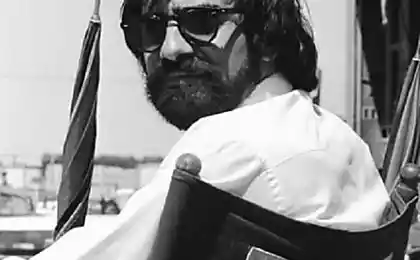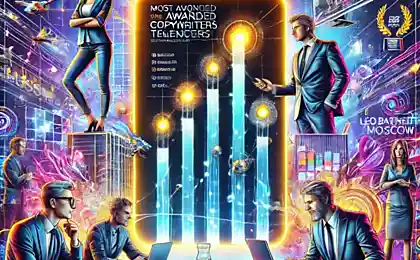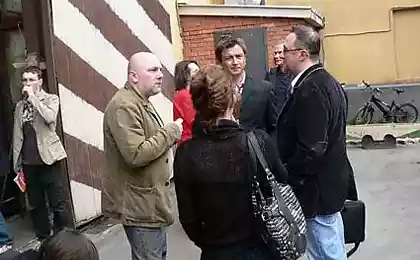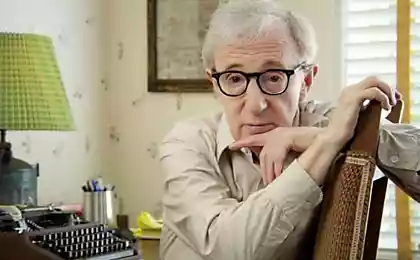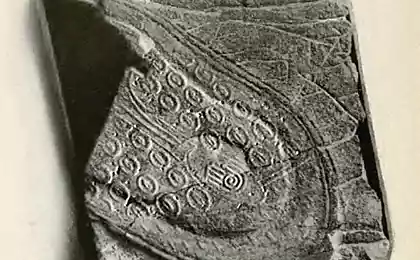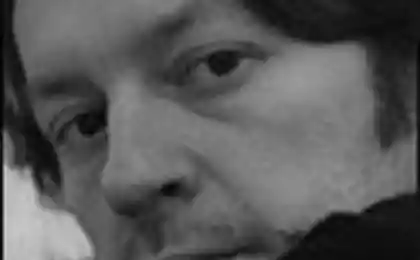1109
The imprint of light: Martin Scorsese on the language of cinema

Light, movement, time, and subtext is what makes cinema cinema, says Director Martin Scorsese. Light is the basis of cinema: to make films that then in the darkness of the cinema become the only source of light. In this form of art was realized by the ancient human desire to capture movement — one of the fundamental human needs. In movies past, present and future merge, and the person's ability to think about the implications, to Supplement the number of personnel in their own imaginary pictures, the most exciting part of the movie. I was eight years old when my father took me to see "Remaining in the shadows", and this event has the strongest impact on my entire life. Probably, that was when I first woke up interest in the movie and there was a desire to watch movies and to make up stories. This was made in England in 1950. The great actor Robert Donat plays of William Friese-Greene — one of the inventors of cinema. The film was timed to coincide with the British festival, so there are so many guest stars. Fifty or sixty of the best English actors of that time flashed in small roles, and even the policeman himself plays sir Laurence Olivier.
The Friese-Greene devoted himself to cinema and died a pauper. So, if you know the story of his life, the phrase "You must be a happy man, Mr. Friese-Greene" seems ironic. But at the same time, it is the truth, because he lived, following his passion. So for me the movie was both sad and inspiring. I was very young and couldn't Express these feelings with words, but I have found confirmation of his feelings on the screen.
"Light is the basis of cinema: to make films that then in the darkness of the cinema become the only source of light. The light is the beginning of everything".My parents had reasons why they constantly took me to the movies. With three years I had asthma, and they thought that I wasn't allowed to play sports. The parents really loved the movie. Books they almost never read: where I grew up, it was not accepted, so we found common ground with movies.
Now, many years later, I understand the value of this connection that has arisen between us through a series of moving images on the screen. Together we experienced something important together learned the spiritual truths that usually appeared in the movies in an encrypted form in the films 40-50-ies of all things was hidden in the details, gestures, attitudes, reactions, light and shadow. And we are faced with those things that normally could not or did not want to discuss or about which were not even aware.
This, in my opinion, partly lies the magic of movies. Some disparagingly call it "fantasy" and try to separate movies from real life, but I think it's a defensive reaction to his power. Of course, cinema is not life. It is a challenge life is a continuous dialogue with it.
"People wanted to capture movement and thirty thousand years ago. The proof is the picture in the Chauvet cave. As you can see, the Buffalo here are a few sets of legs. Maybe the artist tried to depict movement. In that desire lies a mystic impulse, it is an attempt to solve the mystery of who we are and what we are."Frank Capra said, "Film is a disease". In fact, the quotation is slightly longer, but stop while on it. I contracted the disease very early. I felt it every time we approached the ticket office with your mom, dad or brother. When you come in the door, trod on a thick carpet, I walked past the stand with delicious-smelling popcorn and, finally, approached the usher. In the old cinemas in the hall were doors with little Windows, and looking at them, you could see the screen, where the magic was created. And then we went inside, to the Holy temple, which before us was alive with the real world.
What is the secret movie? What makes it so special? The answers to these questions, I found years later.
First, it is light. Light is the basis of cinema: to make films that then in the darkness of the cinema become the only source of light. Light is the beginning of all things. Most creation myths start with darkness, and the life it is born with the light. The light helps to separate one from the other and themselves — from the rest. Helps to comprehend the world, recognizing similarities and differences and the essence of the images of which it consists. A metaphor is a look at one thing through "light" another owing to which it becomes "lit". The light in the core of who we are and how we see ourselves.
Secondly, this movement. When I was five or six years, someone showed cartoon recorded on 16-millimeter film, and I was allowed to look inside the projector. I saw a small static image, uniformly replacing each other in the window. The projector they were upside down, but the screen turning in the right direction. What they saw shocked me no less than the hero Laurence Olivier from "the shadow", when he first showed moving pictures.
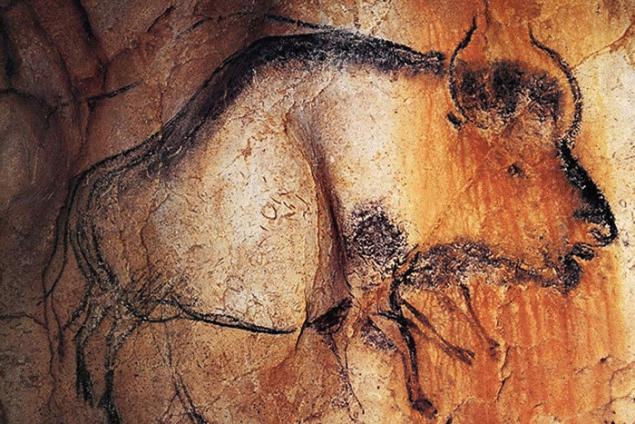
People wanted to capture movement and thirty thousand years ago. The proof is the picture in the Chauvet cave. As you can see, the Buffalo here are a few sets of legs. Maybe the artist tried to depict movement. In that desire lies a mystic impulse, it is an attempt to unravel the mystery of who and what we are. That leads us on to the film about the Boxing cats.
It was filmed in 1894 in new Jersey in the Studio of Thomas Edison Black Maria. It was more like a shed than a Studio, but Edison and his assistants, using the cinema, wrote hundreds of short scenes. And this tape is one of the less well known. There are much more famous: Boxing by Jim Corbett, who was then the heavyweight champion, or Annie Oakley, a famous female marksman of Buffalo bill's. And then, someone came up with the idea to force cats to fight, perhaps, for new Jersey at that time it was normal.
Edison, of course, was one of the inventors of cinema. There is much debate about who really first, whether it was Edison or the French lumière brothers, Friese-Greene or the Englishman Robert William Paul. You can even remember Louis Leprince, who directed a short film in 1888. You can go even further, up to research papers on the movement, which in the 70-80-ies of the XIX century was held by Edward Muybridge.
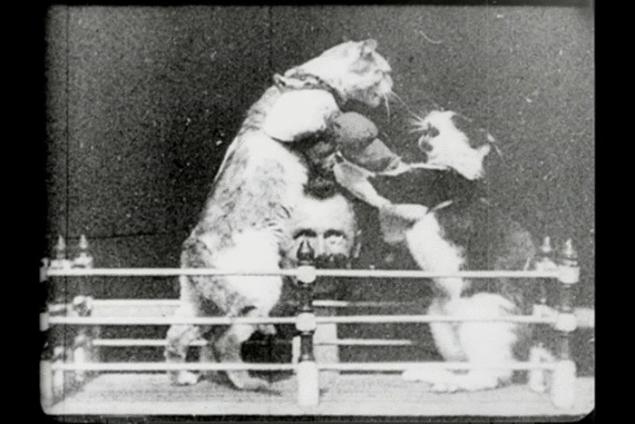
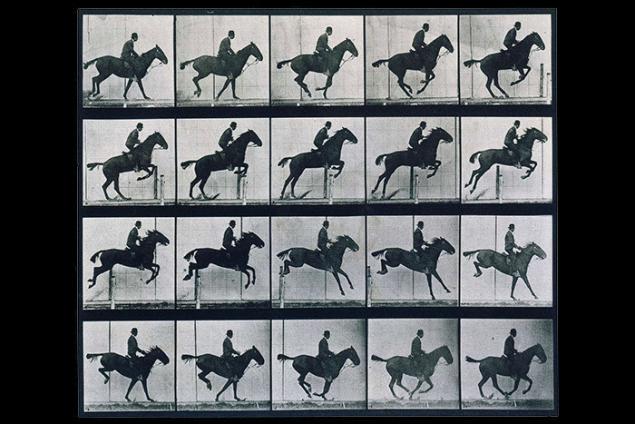
Edward Muybridge, "the Horse in motion"
He placed several cameras, and then launched the mechanism, which in turn was included. So he tried to fix the movement of a person or animal. His employer Leland Stanford made a bet with Meybridzha that the running horse never separates from the ground, four hooves at a time. But as you can see, Muybridge won. When a horse is galloping, her legs are in the air.
So is the movie started with Meybridzha? Or the cave paintings? Thomas Mann in his novel "Joseph and his brothers" writes: "the deeper we descend into the netherworld of the past, confidently or to the touch, the more convinced I am that the fundamental principle of humanity, its history and culture, incomprehensible." Incomprehensible fundamental principle not only of humanity but of the movie. The showing of the film the French lumière is considered the first public film session. The film was shot in 1895, and when we look at it today, the clothes of people, and how they move, understand what it really is 1895. Past and present merge together. That brings us to the third aspect of movie — time.
Working on the film "Keeper of time", we tried to shift during that first screening, when people are so frightened of moving images, in fear jumps to them was hit by a train. After studying the picture of the Lumiere brothers, we immediately noticed that it differs from the films of Edison. Brothers of Lumiere not only recorded the events in their film there is a song. Let's see how exactly the camera is installed, as verified distance between her and the train, as chosen height and angle. I wonder if the camera was a little different, and the audience would react so violently. When working on "time Keeper" we transferred the film Lumiere in 3D. But the effect immediately became another. We realized that the film Lumiere needs to be a two-dimensional image within a three-dimensional, because composition, sound brothers, creating the illusion of depth on a plane.
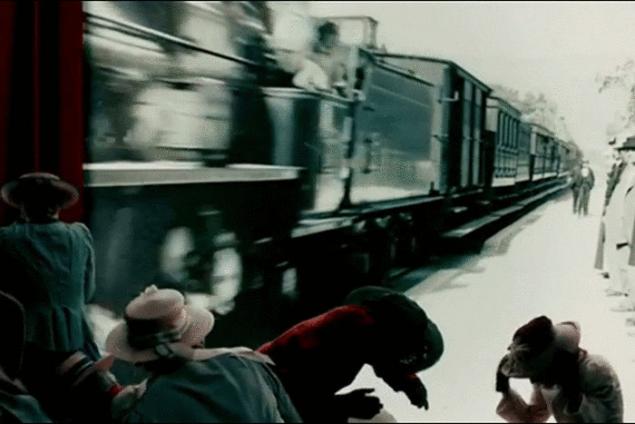
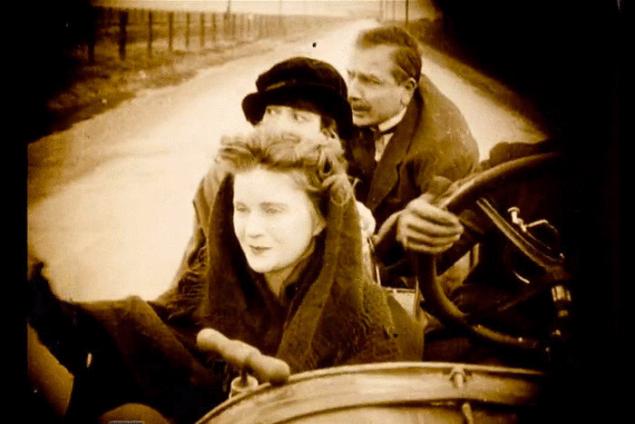
"Journey through the impossible" Georges méliès
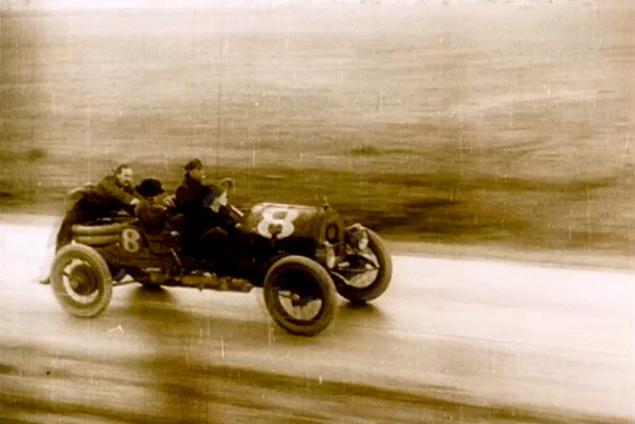
"Journey through the impossible" Georges méliès
So the lumières weren't just recording events, as was done at the studios of Edison, they gave their view of the world and tell a whole story with just one angle. Undoubtedly, the same work and Georges Melies. He was a magician and wanted to make a movie of their performances. He came up with the unusual shooting techniques, and he manually created the special effects. Thus, he had his own altered reality. So his movies like magical boxes, full of wonders.
Now, many years later, the lumière brothers and méliès are often considered opposites: the first is supposedly only recorded reality, and the second created the special effects. Of course, always the temptation to simplify everything. But, in fact, they had the same goal, but they went to it in different ways. Taking the real world as a basis, they reinterpreted the reality, changing its form, trying to get to the subject.
With the development of the installation even more complicated. Who invented the first glue one frame with another, changing the angle, but to do it so that the viewer can understand that watching the same episode? I'll answer the words of Thomas Mann: "It is inconceivable". But, as far as I know, one of the first and most famous examples of the use of the installation was the film Edwin S. porter's 1903 "the Great train robbery". Despite mounting gluing, which takes place the action of the inner part of the train up, we understand that this is a continuation of the same episode.

"The great train robbery"
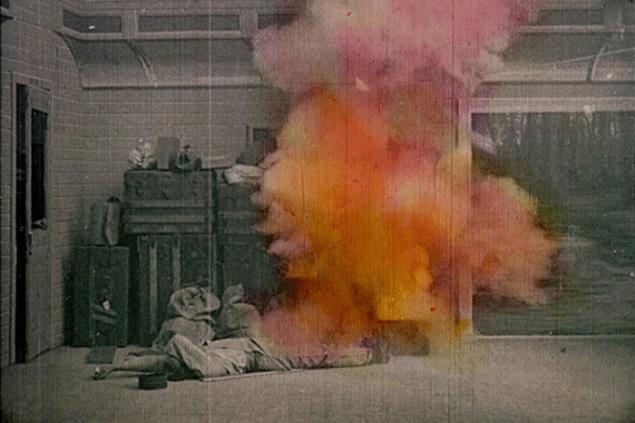
"The great train robbery"

"The great train robbery"
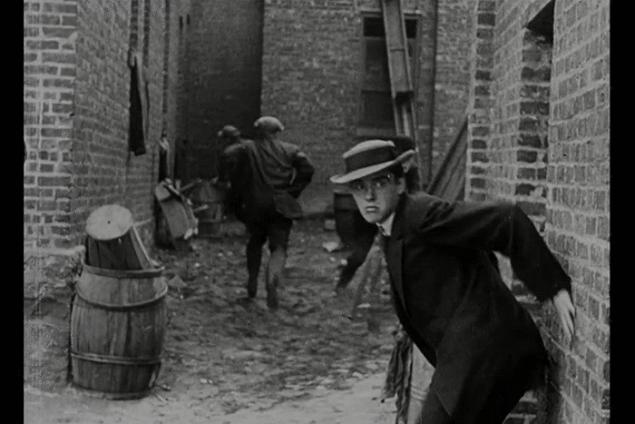
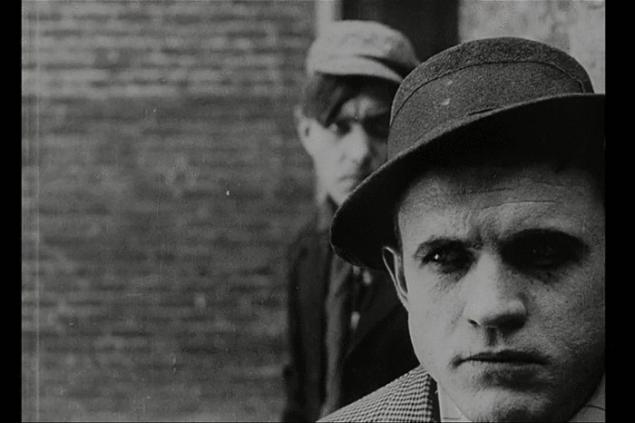
"The Musketeers of pig alley" is a great picture of Griffith's, one of a dozen short films, shot them in 1912. This movie depicting life on the streets of the Lower East side, is considered the first gangster film. In one of his scenes, which, incidentally, reproduces the famous photograph Jacob Riis's "Bandit stash" (Bandit's Roost), the characters undergo a great distance to get to Pig alley. On the screen is not shown, but you think it should be, and you begin to see it in my head.
And it's the fourth movie — the subtext. This picture, which sees our minds. I think thanks to her, and develops a passion for cinema, it encourages me to move on. We take a single frame, combine it with the second, and as a result I have an image of something third, why do not on any of these shots. Were writing a lot about the Soviet Director Sergei Eisenstein, and this principle underlies all his films. I'm fascinated, how to change inner perception, if you take away from the movie quite a bit, just a couple of frames or even just one. I believe that this is the "language of cinema".
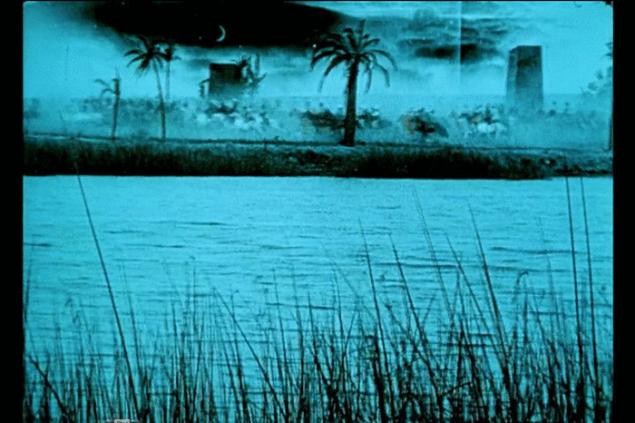
In 1916, Griffith took a three-hour epic movie "Intolerance", which he tried to make amends for racism, in another film, "the Birth of a nation" (The Birth of a Nation). Griffith went further in the development of art installation: he switched the action between the four different stories. The first of them tells of the massacre of the Huguenots, II about the temptation of Christ, the third, most spectacular, the fall of Babylon and finally, the fourth, of modern Director in 1916 year. At the end of the film, Griffith does something that nobody else dared before him: he shows the highlights all stories makes the cut of time. Griffith has mounted frames of different scenes, because he didn't want to just present the facts, he tried to illustrate the thesis. In this case, that intolerance has always existed and it always brought nothing but destruction. Eisenstein called this technique "intellectual montage".
For authors and critics, who are first treated to a movie with incredulity — after all, it appeared as a cheap form of entertainment, this moment was a turning point. From now on, cinema was considered as art. Of course, actually it was art since the days of the Lumiere brothers, Melies and porter, but the film Griffith was the next step in logical development of his language.
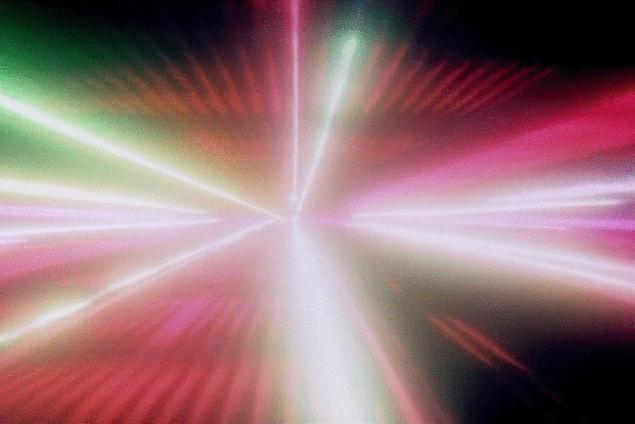
"2001: a Space Odyssey"

"2001: a Space Odyssey"
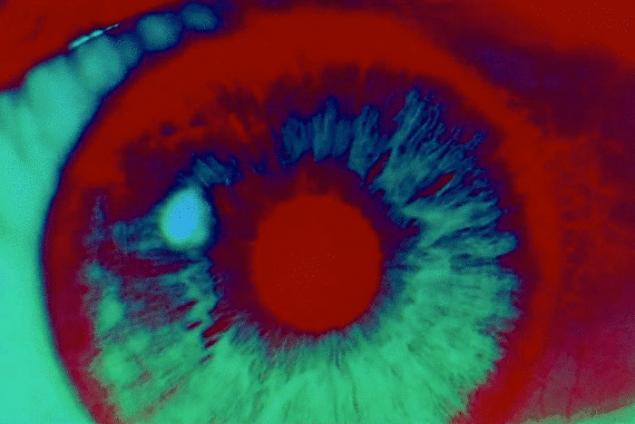
"2001: a Space Odyssey"
This is a scene from the monumental masterpiece of Stanley Kubrick's "2001: a Space Odyssey". It has everything: abstraction, speed, movement, stillness, life and death. We again feel this mystical impulse to move, to go faster and faster and maybe eventually find peace in a state of pure being. But the movie, which we are discussing today, which made Edison brothers of Lumiere, Melies, porter, Griffith and the forecastle, — it is almost gone. It suppressed the flow of moving images that surround us everywhere, and rushing in front of your eyes faster than the vision of an astronaut Kubrick film.
A classic movie, as it is more commonly now called, today in the same status as an Opera by Verdi or Puccini. The film is finally gone. For many, it was a great loss, and I perfectly understand them, I myself grew up on film films and remember their special beauty. But cinema has always been inseparable from scientific and technical progress. And if we take too long to mourn what's already gone, you won't get pleasure from what is happening now. Today all possibilities are open, and probably someone from this. But I think we live in an exciting time, because do not know what will happen tomorrow, nor what will happen in a week. And we have no other choice but to learn to perceive the flow of these moving pictures as a language. We must understand that we see before us, and find a way to understand all this.
"Incomprehensible fundamental principle not only of humanity but of the movie. Screening of the French lumière is considered the first public film session. The film was shot in 1895, and when we look at it today, the clothes of people, and how they move, understand what it really is 1895. Past and present merge".Nowadays no one disputes the importance of literacy. A couple of millennia ago, Socrates was not agree with this. His arguments sounded just like the words of those who today criticize the Internet, considering it a poor substitute research work in the library. In the dialogue with Phaedrus, written by Plato, Socrates worries that writing and reading will lead to the loss of real knowledge, learned to read and write, people will no longer remember things, and people will create only an appearance of wisdom.
Now we take it for granted that reading and writing are taught in school, but continue to ask the same questions in relation to moving pictures. Not whether they bring harm? Do not forget, whether we are for them to write?
Images surround us everywhere we encounter them much more often than before. Therefore, it seems necessary to make the education of special emphasis on the development of visual literacy. Young people should understand that not all images can be consumed like fast food: eat it and forget. There is a difference between moving images that serve as food for the soul and mind, and images aimed to sell something. Steve Apkon, producer and founder of The Jacob Burns Film Center writes in his book "the Century of images" (The Age of the Image) that should not be a separation between verbal and visual literacy, as well as there should be dispute about what is more important: the word or image. They're both important. They both lie at the basis of everything. They both help us to understand who we are.
In the ancient writings it is almost impossible to distinguish words from pictures. In fact, words are pictures or symbols. Chinese and Japanese languages are still based on a pictographic system. And at some "inconceivable" moment of history — words and images separated, like two rivers two paths to understanding the truth.
"We take a single frame, combine it with the second, and as a result I have an image of something third, why do not on any of these shots. Were writing a lot about the Soviet Director Sergei Eisenstein, and this principle underlies all his films. I'm fascinated, how to change inner perception, if you take away from the movie quite a bit, just a couple of frames or even just one. I believe that this is the "language of cinema".In 1990 I founded the organization The Film Foundation, in which we have been developing a training course "the Story of cinema". It was distributed free of charge among teachers, and as a result about one hundred thousand teachers included it in their program.
The course consisted of three sections, each focused around a particular film. One such film was the picture of the 1951 "the Day the Earth stood still" (The Day the Earth Stood Still), which, incidentally, was filmed not far from here. Why we chose her? Because this is a beautiful black-and-white movie. Because in Hollywood, then filmed great movies, and the period is called the Golden age. Because this is one of the best sci-Fi pictures of the 50-ies. But there was another reason.
The American critic Manny Farber once said that every film carries the DNA of his era. "The day the Earth stood still" was filmed in the height of the cold war, therefore, it reflects the tension, paranoia, fear of nuclear catastrophe and the end of the world and many that are difficult to Express in words. All this occurs through the play of light and shadow, the emotional and psychological interaction between the characters, the atmosphere of the time woven into the action, and context, which remained behind the scenes, but strongly influenced the perception of the audience, in particular our parents. These items are shown as if in passing, fill the film with life, the more you dig in their study, the stronger the effect from the movie.
What would happen if the film will see people from another era? I remember 1951, when I was nine. But for a man born twenty years later, the film will look quite differently. And who was born today, too, will see it through very different eyes, he will have a different Outlook, different values, and prejudices of the old time will not push him. We always watch a movie through the prism of its era, and this means that over time, some things cease to be perceived, and which, on the contrary, fall under the focus of much attention. But a really strong film becomes less effective, even when the context changes completely.
But in order for us to be what to analyze and how to look for new meanings, should be the subject of analysis. You need to be able to keep it. Archaeologists make discoveries, studying the garbage that people threw out, moving to a new level of civilization. Take, for example, Sumerian tablets. They are not poems and not stories, and the economic calculations on the sale of cattle. It is surprising that for centuries they lay under the earth, and are now stored in rooms with special climate control. To secure such findings very seriously. With the movie must be the same.
But movies aren't made out of stone. Until recently, they were recorded from a thin layer of nitrocellulose, the first plastic material. Enjoyed it until the end of 40 years, but it was highly flammable and could even explode. In 50-e years it was replaced by the non-combustible film.
About the safety of the movies at the time no one thought that if something was kept, accidentally. Some famous paintings have suffered more than others, becoming victims of their popularity. They were produced many times, constantly rewriting from the original negative, thereby destroying it. And the film then was so fragile and light that even drowned in water. Not much time has passed since then, when the film was melted to extract the silver. And movies 70-ies and 80-ies were processed in guitar picks for guitars and plastic heels.
"In the ancient writings it is almost impossible to distinguish words from pictures. In fact, words are pictures or symbols. Chinese and Japanese languages are still based on a pictographic system. And at some "inconceivable" moment in the history of words and images was divided, like two rivers, as two ways to the understanding of the truth."I dread to imagine that the stunning glass photographic plates taken during the Civil war, almost immediately after the invention of photography, then sold to the gardeners who made them greenhouses. And those that survived are now stored here at the Library of Congress.
And so when I hear the question "Why do something be stored?", which still is asked quite often, I just remember all these stories, these silent movies and these pictures of the Civil war that no one thought valuable. Understanding their importance came much later. Why keep it? Then that we wouldn't know where to go until we understand where our path begins. We cannot know the future or the present, we don't solve the problems of the past.
I became interested in this idea in the early 80-ies, when they realized how short-lived the movies. And somewhere in the early 90s we created The Film Foundation, which at the invitation of Bob Rosen, besides me, included Spielberg, Lucas, Coppola, Robert Redford and Sydney Pollack. The essence of The Film Foundation to teach Studio and archives to work together. The consciousness of the people began to change, they began to understand how important it is to preserve the movie. But it takes a lot of time: you constantly need to recheck all the movies, convert them from one format to another — the process can last indefinitely.
But, unfortunately, we were too late. More than 90% of silent films lost forever. Sometimes some of them miraculously are. As, for example, the film is John Ford's 1927 "upstream" (Upstream) not so long ago was discovered by the National Foundation for the preservation of cinema in new Zealand files. But every time this happens, we must remind ourselves of the hundreds and even thousands of other films that did not return. So we can better take care of everything that remains, from recognized masterpieces to movie technical movies and home videos. All that can tell about us in the future.
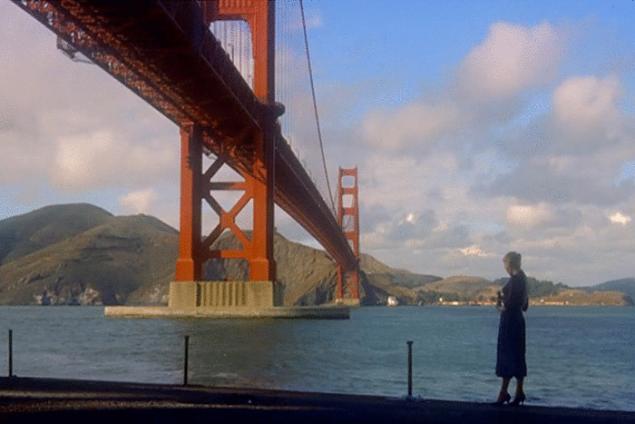
Picture Alfred Hitchcock's 1958 "Vertigo" many of you have probably seen. When she was released, people looked at it, someone liked it, someone not; and then she just disappeared. It was announced, just as another painting of the great masters of suspense. Then the new Hitchcock picture came out almost every year at the same time, and they become almost the franchise.
Thanks to the French Directors of the "new wave" and the American film critic Andrew Sarris has redefined the art of Hitchcock. They gave a more in depth look at his film and drew our attention to the author's approach, who always hides behind the camera.
When the language of film began to be taken seriously, it was taken more seriously and Hitchcock. He was a master of visual storytelling, so the closer you look at the picture, the more emotionally difficult it seems.
But ironically people have a better understanding of the genius of Hitchcock, when some of his most important paintings are already gone. It was in 1973. The film "Vertigo" was only one of a list of lost are also considered "rear Window" (Rear Window) and "Rope" (Rope).
At that time nobody was aware what had happened and did not realize that we will never see these movies. I must say, Hitchcock himself hindered the dissemination of his paintings. Passed some secret shows, someone in new York and Los Angeles were stored pirated copies, and all this only added to the film of mystery.
The film reappeared on the screens in 1984, together with some other paintings. But it was overwritten with the copy and not the original instance, and the colors in it looked different. This was a serious loss, because "Dizziness" is a very unusual color scheme.
The restoration of the original negative required serious work. Ten years later, Bob Harris and Jim Katz conducted a complete restoration of the film for Universal. It cost a lot of money. It was originally filmed in VistaVision system, but since it no longer exists, the film was reconstructed in the most similar format, overwriting on 70-millimeter film. In addition, the sound and the image were badly damaged. But in spite of that, most of the film failed to recover.
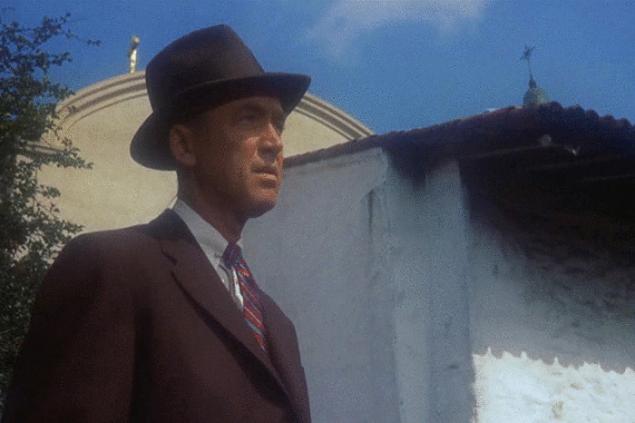
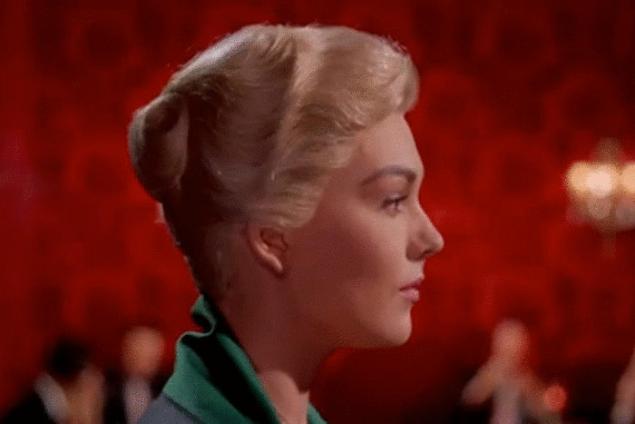

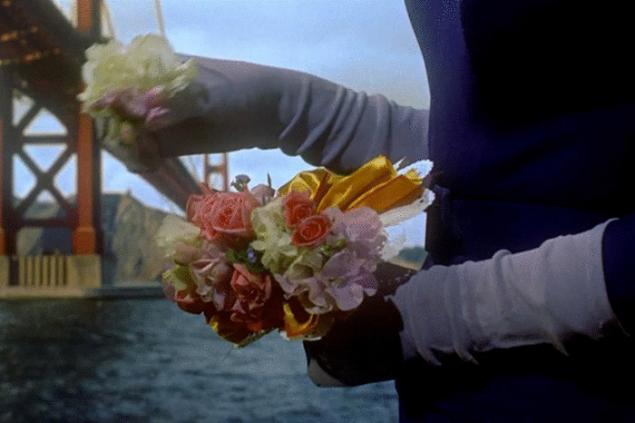
A man hired to follow a woman who is obsessed with the tragic life story of her grandmother. She's not herself, she's very confused and her life is in danger. She had a vision that death will overtake her in Northern California at the top of the bell tower. He's taking her to because she thinks it will help her to heal. She goes up to the tower, he stays downstairs because he is afraid of heights, and helplessly watches as she throws herself from the bell tower.
This is only the first half of the film. And just what for the plot. And, like most great movies, perhaps even all, the story here is not important. "Vertigo" is not just film history, this movie is mood. Here and the atmosphere of San Francisco, where people live surrounded by the ghosts of the past, here and the constant fog, distorting the sunlight, here the anxiety of the protagonist, the role of which performs James Stewart and finally, here is a haunting musical motif written by Bernard Herrmann. And, as film critic said the Kite, if you haven't seen "Vertigo" twice, then consider that you generally do not see it. If in the hall there are those who have not seen this film, you will see and understand what he meant.
"More than 90% of silent films lost forever. Sometimes some of them miraculously are. As, for example, the film is John Ford's 1927 "Against the current" not so long ago was discovered by the National Foundation for the preservation of cinema in new Zealand files. But every time this happens, we must remind ourselves of the hundreds and even thousands of other films that did not return".In 1952, the editors of the British magazine Sight and Sound poll, which is then repeated every ten years. They asked people working in the film industry all over the world (Directors, writers, producers and critics) to name the ten greatest films of all time. Then the results were summed up and the results published in the journal. In 1952, number one was the film of the great Italian neorealist Vittorio de sica "Bicycle thieves" (Bicycle Thieves). Ten years later, in 1962, it was replaced by "Citizen Kane" (Citizen Kane) Orson Welles, he remained on top of the list for another forty years. "Citizen Kane" is undoubtedly a masterpiece. It was released in 1941 with great fanfare and, although I have not had great financial success, was a milestone in the history of cinema. In 50 years, when my generation, it again drew the attention and began to show on TV. He was considered one of the greatest paintings and regarded so far. Also called truly American film, revealing the problems of career ambitions and failures, problems time.
As I said, "Citizen Kane" remained number one for forty years. Until 2012, when his place was taken by a film in 1958, which was considered lost forever. I'm talking about Vertigo. And by the way, the "Citizen Kane" was a similar story: the original negative was destroyed by fire in the mid-70s in Los Angeles.
My point is that we should not just preserve, but, most importantly, not to go on about cultural standards. Especially now. There was a time when people had no idea about the size of box office receipts. But with the 80-ies it has become a sport and method of evaluation of the film, to trivialize the very idea of art cinema.
Today, young people know everything. Who earned the most money? Who is the most popular? Who was the most popular last year, last month or last week? The cycles of popularity are reduced to hours, minutes, seconds and a movie in which there are serious ideas and real passion, mixed with dummies.
And, standing in the middle of this chaos, we must remember one important thing: we think we know what will go down in history and what is not. We can be absolutely confident in it, but actually we don't know and can't know. Always remember Vertigo, photographs of the Civil war and the Sumerian tablets.
And of the fact that in 1849, the author of "Moby dick" was able to sell only a few copies of his book, and all that was left, was destroyed by fire. This novel is many people do not like, and as a result the best work of Herman Melville and one of the best books in literary history had been forgotten until the 20-ies of the last century.
"We should not just preserve, but, most importantly, not to go on about cultural standards. Especially now. There was a time when people had no idea about the size of box office receipts. But with the 80-ies it has become a sport and method of evaluation of the film, to trivialize the very idea of art cinema".We must always remember that there are other values other than financial, and that our cultural heritage must be preserved to get posterity. We are proud of our poets, writers, jazz and Blues musicians, as well we should be proud of and a movie that became a great American achievement of art.
Yeah, we're not the only one who invented the movie, and not the only one who was shot in the twentieth century, good movies, but still greater extent the art of cinema and its development was connected with the history of our country. This imposes a great responsibility on us. Therefore, we must understand that the time has come when every moving picture have to be treated with the same respect and reverence that the ancient books in the Library of Congress.published
Source: theoryandpractice.ru
The fight against joint pain using natural remedies
Touching to the core story of the rescue of a baby elephant in the Indian district Chatra
